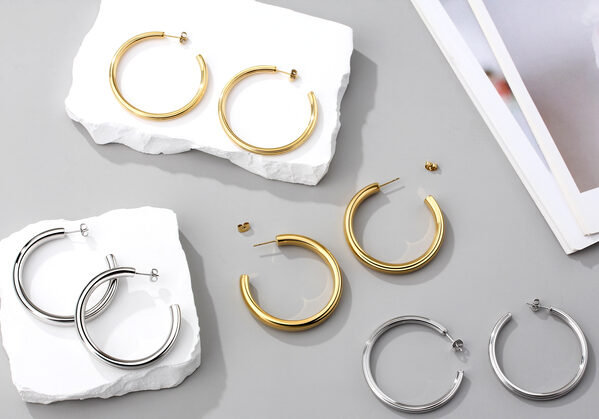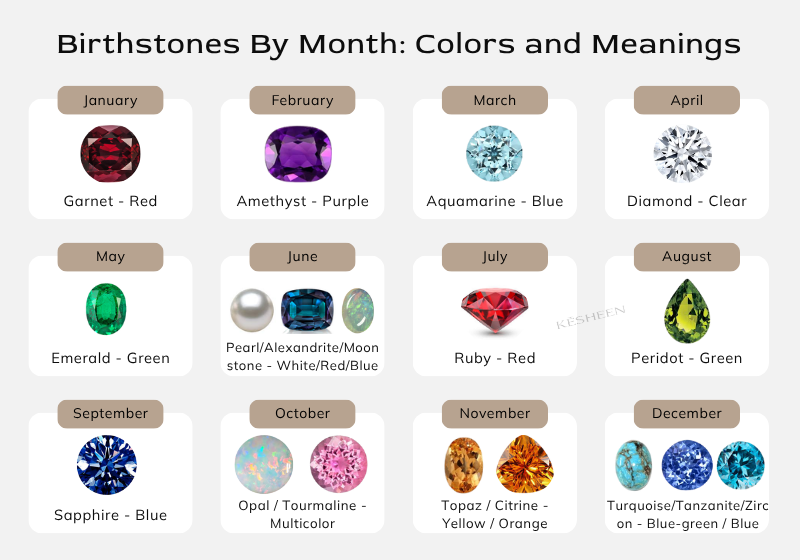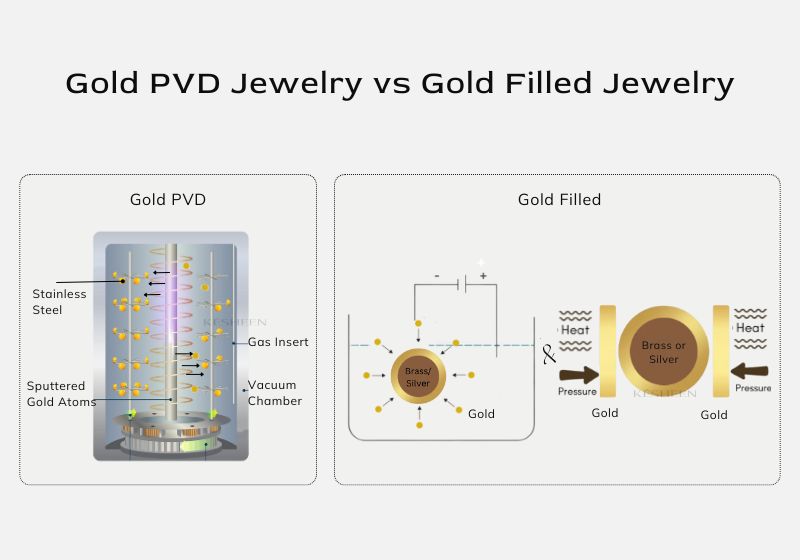For people with sensitive skin, choosing the right jewelry can be a challenge. This is because certain metals can cause skin reactions, leaving you with itching, redness, and skin irritation.
Jewelry made from stainless steel stands out because of its metal composition and various regulations guiding its manufacturing. But is stainless steel jewelry good for sensitive skin, especially sensitive ears? Is it hypoallergenic? In this post, we will explain everything you need to know about skin sensitivity and whether stainless steel jewelry can be trusted by individuals with sensitive skin.
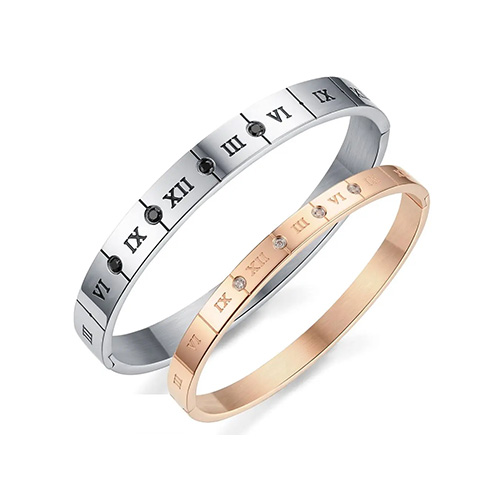
Understanding Skin Sensitivities and Metal Allergy
First, what causes skin reactions to jewelry?
When people experience skin reactions to jewelry, it is often because of the metal compositions in the piece. The reaction takes effect because they have an underlying allergy to one of the metals.
Some of the common metals that cause skin irritation are:
- Nickel: This is the most popular metal behind skin reactions to jewelry. It’s often used in jewelry because of its strength and durability. However, it causes skin reactions to some people. Studies show that on average 15-16% of women and 4-5% of men are allergic to nickel, making it one of the most common contact allergens worldwide.
- Copper & Zinc: These two metals are also frequent culprits behind skin reactions to jewelry. They are often used in brass jewelry, containing a traceable amount of nickel. Hence, it causes skin discoloration and allergic reactions to some people.
For those prone to irritation, choosing metals that are both hypoallergenic and durable matters. Many people turn to tarnish-free jewelry options such as stainless steel because they minimize both discoloration and allergic response.
Symptoms of Jewelry Allergies
The common symptoms of allergic reaction to jewelry include:
- Itching
- Redness
- Swelling
- Rashes
- Blisters
- Burning feeling
- Dry or scaly skin
- Dark patches on the skin
What Type of Jewelry Is Best for Sensitive Skin?
When selecting jewelry for sensitive skin, choosing the right jewelry metal is important. Certain metals have a lower risk of causing allergic reactions. Some best metals for sensitive skin include:
304 & 316L Stainless Steel
Is stainless steel jewelry safe? Yes, 304 & 316L are great metal jewelry for sensitive skin. They are popular for their low nickel content and high corrosion resistance.
Most importantly, 316L stainless steel jewelry is a top choice. It is sometimes called surgical stainless steel because of its hypoallergenic properties, making it the go-to metal for earrings, body piercing jewelry, and other jewelry that may cause skin reactions.
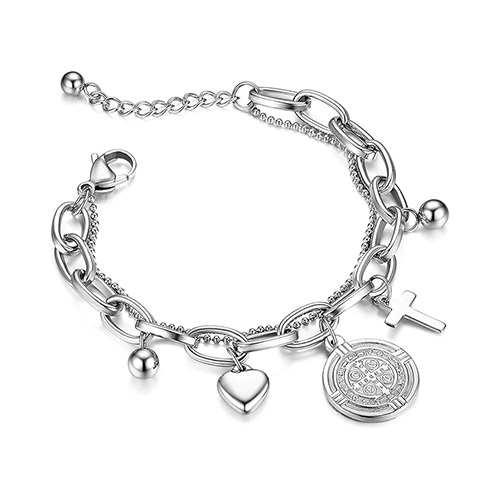
PVD Gold-plated on Stainless Steel
Physical Vapor Deposition (PVD) gold-plating involves applying a thin layer of gold onto the surface of stainless steel jewelry. PVD coating ensures the metal surface is entirely covered, making it safe for people with sensitive skin.
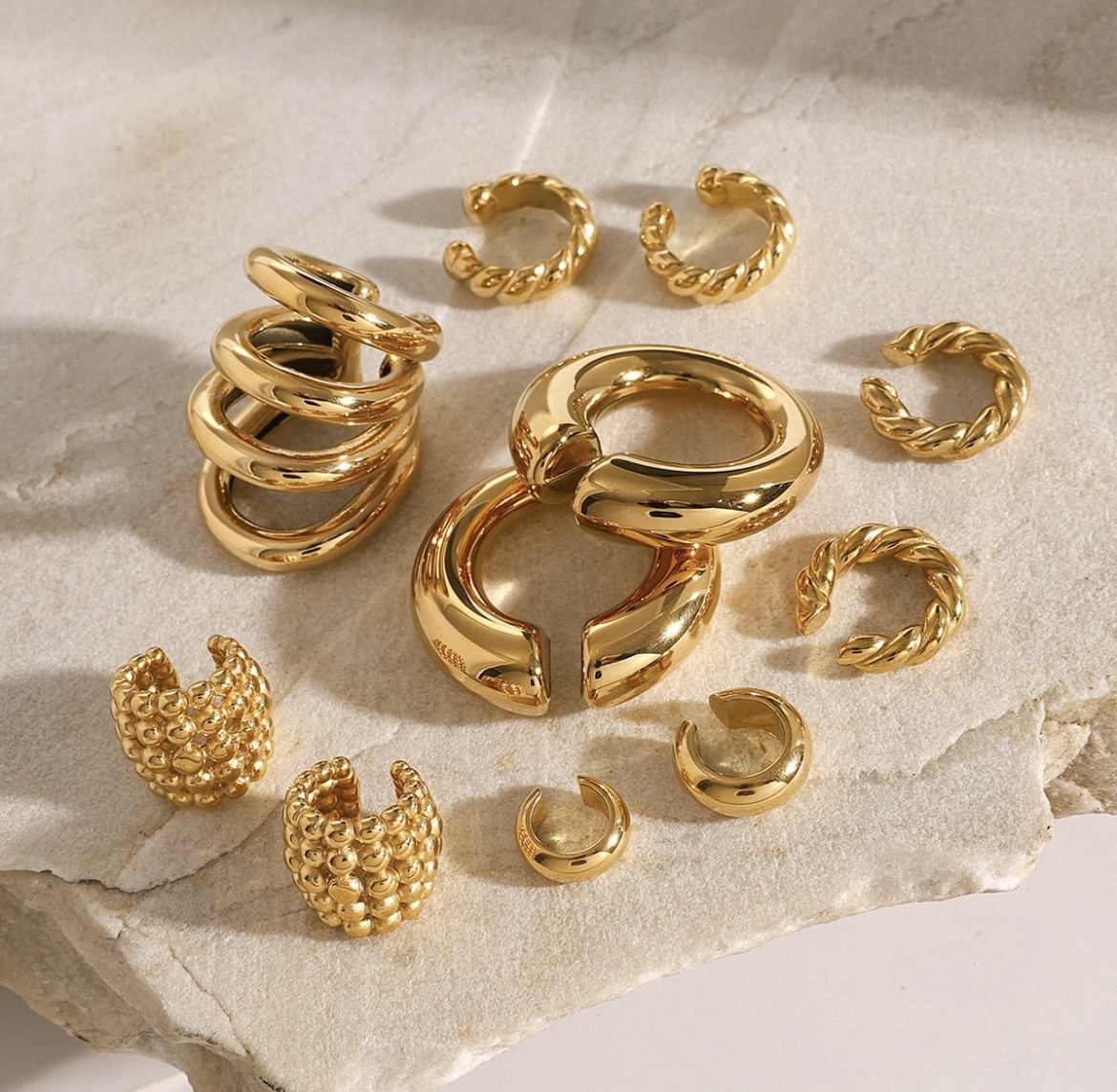
Solid Gold
Solid gold, which is also known as pure gold, is hypoallergenic and ideal for individuals with sensitive skin. It can be very expensive, but it’s composed of 100% real gold without the inclusion of any other metal.
There are other types of gold jewelry, such as gold vermeil and gold filled, which are also great options. But they contain small amounts of other metals which can cause allergic reactions.
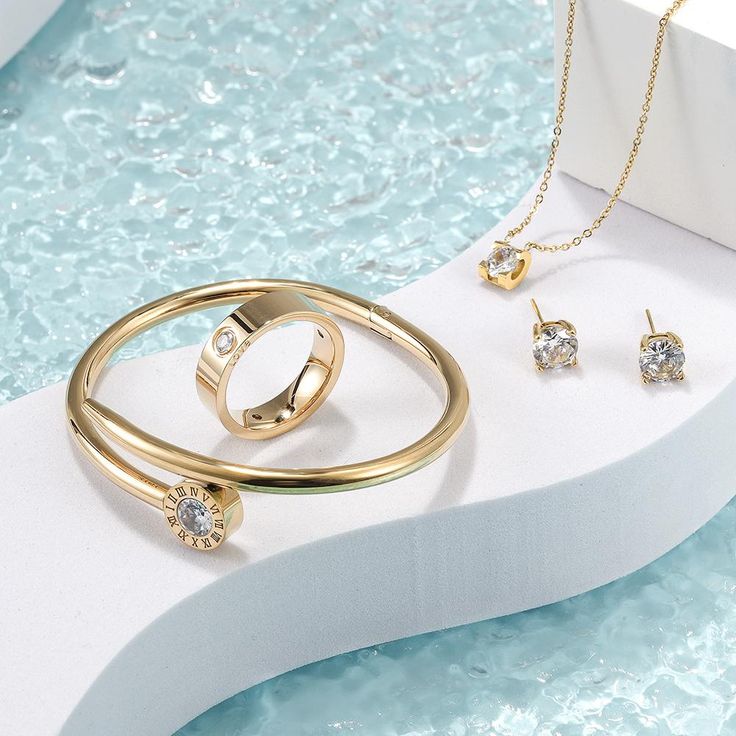
Platinum
This is a precious metal that’s naturally pure and durable and doesn’t require the addition of other metals for jewelry pieces. Platinum is generally considered one of the best metals for sensitive skin because of its chemical stability, which contributes to its hypoallergenic nature.

Source: Pinterest
Sterling Silver
Sterling silver (92.5% pure silver) is generally safe for sensitive skin. For even better protection, rhodium-plated sterling silver is an excellent choice—it adds a hypoallergenic barrier that prevents irritation while maintaining long-lasting shine.
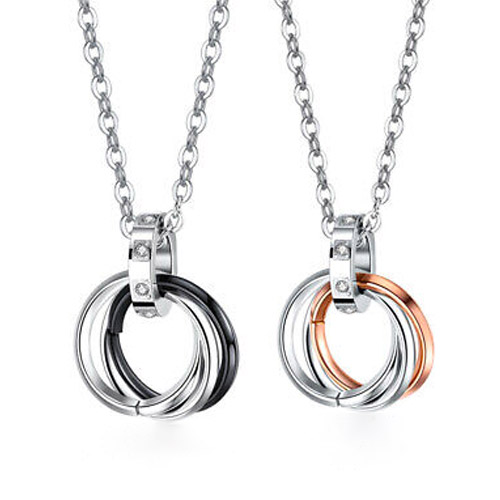
Understanding Stainless Steel Jewelry
Discussed below is a comprehensive guide on stainless steel jewelry, highlighting essential facts you need to know about its suitability for sensitive skin.
Common Types of Stainless Steel Used in Jewelry
There are 2 popular types of stainless steel used in making jewelry. They are:
- 304 Stainless Steel
Its primary components include chromium, nickel, and carbon. 304 stainless steel is hypoallergenic and cost-effective.
- 316L Stainless Steel
Its primary components include chromium, nickel, carbon, and molybdenum. The “L” in 316L stainless steel stands for low carbon, which makes it ideal for daily wear without considerable deterioration or discoloration.
The difference between 304 and 316L stainless steel is due to 316L low carbon content and added molybdenum, which makes it highly corrosion-resistant, more durable, hypoallergenic, and the best metal for sensitive skin.
Is Stainless Steel Jewelry Hypoallergenic?
Yes, both 304 and 316L stainless steel are considered hypoallergenic, safe for most people, and rarely cause allergic reactions. When evaluating the pros and cons of stainless steel jewelry, stainless steel jewelry is often highlighted for its skin safety. But for people with extremely sensitive skin or specific metal allergies, it’s best to choose 316L stainless steel (surgical grade steel).
Does Stainless Steel Cause Skin Irritation?
NO. Stainless steel, especially 316L stainless steel is hypoallergenic and does not cause skin irritation. This hypoallergenic stainless steel is a low-carbon, high-chromium alloy with great resistance to corrosion, which means it’s less likely to cause allergic reactions for anyone. That’s why it is widely recommended as the best metal for body piercings.
Is Stainless Steel Jewelry Nickel Free?
If by definition, stainless steel jewelry is not completely nickel-free. Both 304 and 316L stainless steel contain a certain amount of nickel.
However, the lower nickel content in 304 and 316L stainless steel is considered too small to cause any reaction, commonly regarded as nickel-free. And this metal also contains molybdenum, which is a medical-grade material that curbs allergic reactions. To learn more, check our detailed guide on does stainless steel jewelry has nickel.
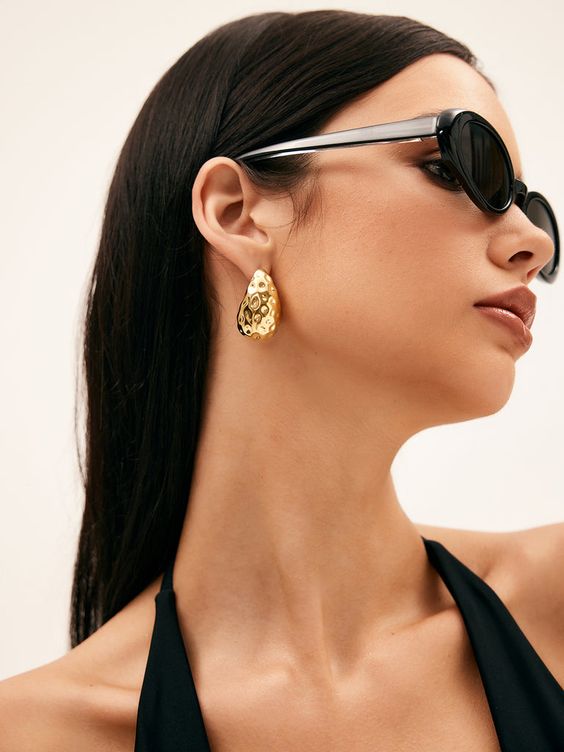
Source: Pinterest
US Standards for Nickel Control
California Proposition 65 is the major standard set for nickel control in jewelry making in the USA. It stipulates a rate of compounds of nickel with solubility in water of greater than 0.1 moles per liter (mol/L) at 20⁰C.
EU Standards for Nickel Control
- REACH
Registration, Evaluation, Authorization, and Restriction of Chemicals (REACH) is a standard set to regulate the concentration of chemicals and heavy metals in jewelry products within the European Union.
REACH legislation sets limits for the use of nickel. For direct and prolonged skin contact, the limit is 0.5 mg/cm² per week (non-compliant below 0.88 mg/cm² per week). For all post-piercing pieces, the limit is 0.2 mg/cm² per week (non-compliant below 0.35 mg/cm² per week).
- CEN EN 1811:2023
This standard regulates the reference test method for the release of nickel from jewelry inserted into pierced body parts, and direct and prolonged skin contact.
What is Inferior Stainless Steel Like?
Is stainless steel good quality jewelry? Yes, not all jewelry made in China is always cheap and low quality. But there are also inferior jewelry if you buy from unreliable manufacturers.
How does stainless steel jewelry quality relate to wearing experience? Inferior stainless steel basically contains more impurities, jewelry allergy components, and fails to meet the standard of 304 and 316 stainless steel grades. Jewelry pieces made from this type of stainless steel oxidize quickly and might have a rusty or corrosive smell.
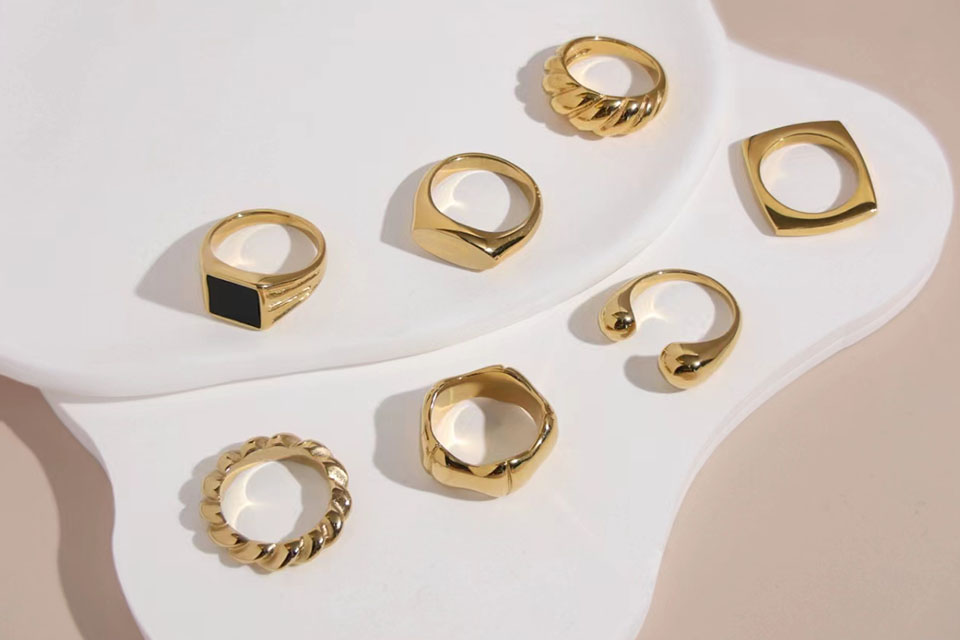
Should I Opt for Stainless Steel Jewelry If I Have Sensitive Skin?
The decision whether to choose stainless steel jewelry if you have sensitive skin is mainly dependent on two factors, which are:
- Your Skin’s Sensitivity Level:
Firstly, you should consider how severe your skin sensitivity is. If you experience reactions like redness, itching, swelling, rashes, and so on when your skin contacts any metal, we recommend you opt for jewelry made with stainless steel.
- Grade of Stainless Steel:
There are 2 reliable grades of stainless steel for jewelry – 304 and 316L stainless steel. While mild metal allergy, you can choose 304 stainless steel. But for severe metal allergy, it’s best you select 316L stainless steel.
Why is Stainless Steel Jewelry a Good Choice for Sensitive Skin?
Is sterling silver or stainless steel better for sensitive ears? Generally, stainless steel is better than sterling silver for the following reasons. To explore in detail, see our guide on how to choose between stainless steel vs sterling silver.
- Hypoallergenic Properties
Stainless steel jewelry, especially those made with 316L stainless steel are hypoallergenic. Even though stainless steel contains a small amount of nickel, the nickel content is tightly bound within the metal, preventing it from coming into contact with the skin. This hypoallergenic metal guarantees that you won’t experience any form of skin irritation easily.
- Unparalleled Durability and Longevity
If you are wondering if stainless steel is waterproof enough? The answer is definitely YES. Stainless steel jewelry is very strong and has a long lifespan. Unlike softer metals like gold or silver, unplated stainless steel is highly resistant to scratches, meaning it will last for a lifetime without losing its original beauty. This makes it a great option for jewelry that will be worn daily or come in contact with harsh conditions.
Stainless steel jewelry contains chromium, which serves as a protection against tarnish and corrosion. It prevents oxidation and rusting when exposed to liquid, sweat, or air. Thus, stainless steel jewelry can be worn when bathing, swimming, or working out.
- Cost-effective
Stainless steel jewelry is less expensive, making it an affordable alternative to more expensive pieces like gold, platinum, and sterling silver jewelry. Without compromising on quality and appearance, stainless steel jewelry will exude an attractive look and last long. Generally, it’s a great option for people looking for budget-friendly, hypoallergenic, yet stylish jewelry.
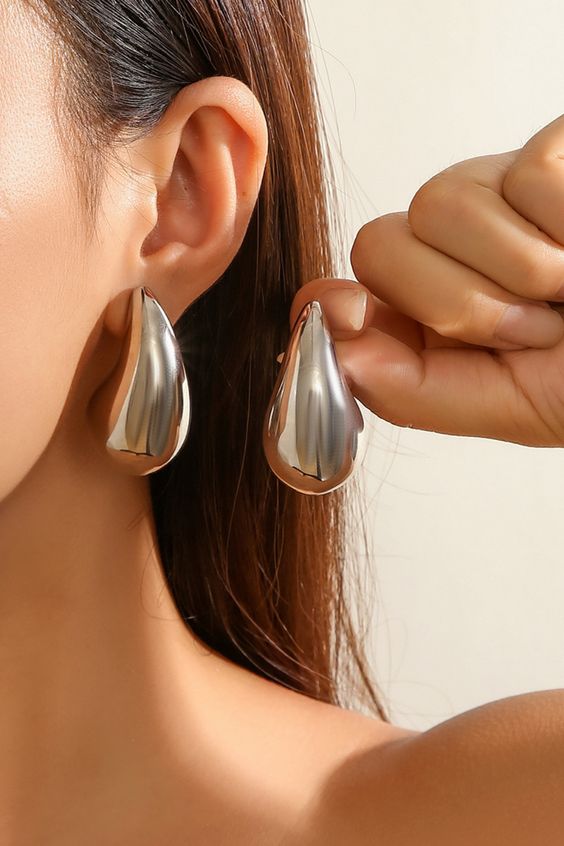
Source: Pinterest
Which Material Should Small Brands Opt for when Concerning Low Skin Irritation?
As a small brand, it’s advisable to choose from the following based on your budget. You can contact us for your allergy-free jewelry and professional guidance.
- Sterling Silver Product
This is the most classic choice for hypoallergenic jewelry, as silver is lower priced than white gold while the color is white and shiny, they look just as premium. Also, the rhodium plating layer makes the jewelry skin-friendly and long-lasting.
- Stainless Steel Product
This is the best cost-effective jewelry product, as it ticks all the options of durability, longevity, beauty, and suitability for people with sensitive skin. With a lesser cost, stainless steel jewelry can imitate the looks and stylishness of gold, silver, or platinum pieces.
- Gold Product
Gold jewelry, especially when used in higher purities like 18K or 24K is naturally hypoallergenic and exudes a sense of luxury. However, gold products are generally more expensive.
Key Takeaway
For those with sensitive skin, stainless steel jewelry offers a stylish and practical solution. Both 304 and 316L stainless steel are good for people with sensitive skin, but 316L stainless steel is most recommended for sensitive skin because of its greater hypoallergenic properties and durability.
FAQs
No. Quality stainless steel or surgical steel jewelry resists corrosion and does not turn skin green or stain skin. Green discoloration typically comes from reactive base metals like copper or brass—not stainless steel.
Gold plated stainless steel is generally hypoallergenic especially with PVD coating. The protective plating helps prevent skin reactions—so gold plated stainless steel is generally safe for hypoallergenic jewelry seekers.
Yes. Stainless steel, especially surgical-grade stainless steel (316L), is hypoallergenic and ideal for sensitive ears. It resists corrosion and rarely causes irritation—making it a hypoallergenic metal of choice for daily wear.
